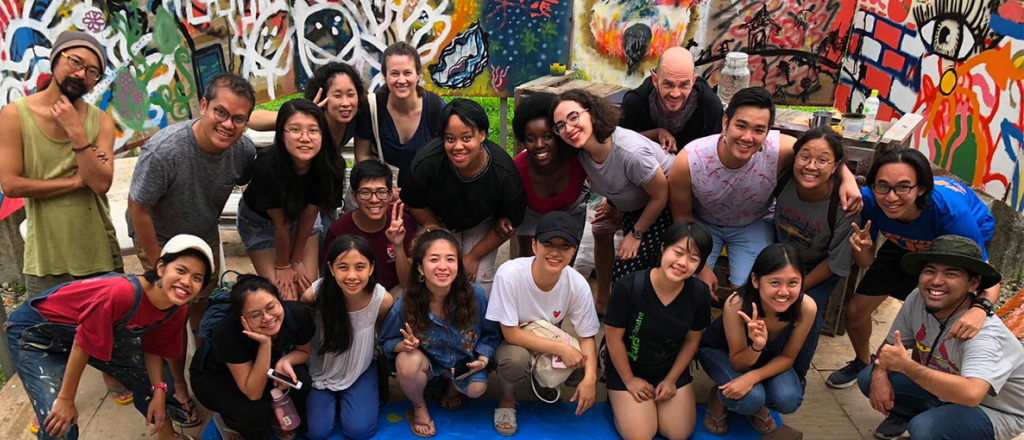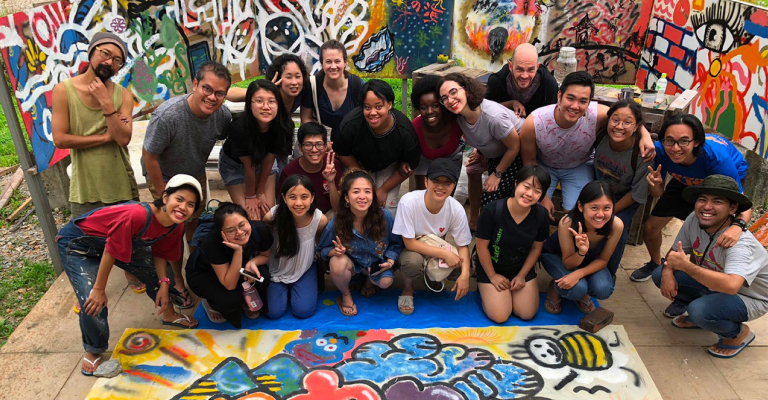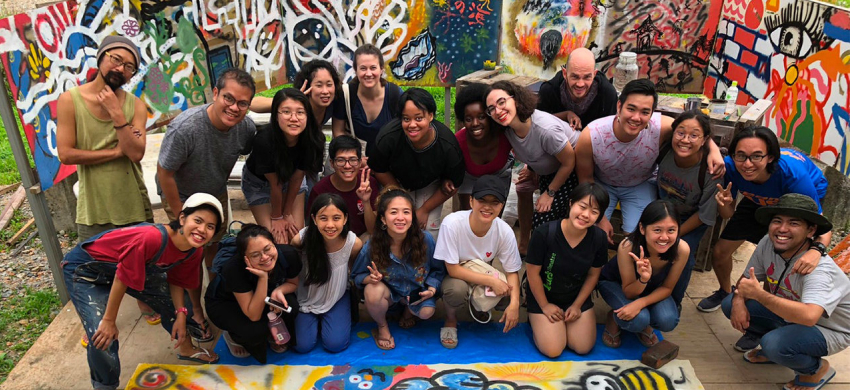Students who complete the Arts and Humanities major should be able to:
- Identify form, structure, and other principles of art;
- Use theory as a way of clarifying various modes of self–expression;
- Understand, and communicate through non-textual forms of thought and feeling;
- Recognise the relevance and relationship of art to community, society, and traditions;
- Describe, interpret, and implement artistic processes and methods;
- Appreciate the integral importance of history to all artistic processes;
- Demonstrate literacy in the analysis of different modes of art; and
- Learn to reimagine the world through artistic lenses by making art.
Collectively, these capacities will enable students to think creatively and critically about the arts.
Students will pursue these learning objectives in two ways: by gaining breadth across the major, and depth within any one or two tracks of particular interest to the student.
The Art History Track: This track will introduce students to art as a historical and critical discipline. Students will examine artworks in their historical, social, political and religious contexts through a number of different theories, methodologies, and interpretative approaches. Students will gain both visual literacy and an understanding of the foundational principles of current art historical research and writing. They will engage important questions such as: What does a work of art mean, to whom, and why? How does the art-object function in culture, and how does culture function in art? In our global society today, how does the traditional history of art play a role in the context of new ideas? In tackling these questions, this track aligns with the broader objective of the Arts and Humanities major to equip students with the fundamental tools to critically think, analyse, and approach a wide range of artworks from different time periods and cultures.
The Art Practice Track: This track focuses on integrating the plasticity and inter-relationality of space, time, and place from the perspective of an art practitioner. Students will be enriched by the artistic processes they experience, and learn to take risks with new modes of creative expression to become more familiar with positioning one’s work in the contemporary world. This track consists of a synthesis of various methods, forms, processes and creative approaches concerning art practice. The projects that students will embark upon will involve individual and collaborative efforts that can push beyond the frontiers of current art practices and discourses. Student projects will engage in critical and reflective thinking in relation to community, context, and society. The breadth of exposure to various practices, as chosen by the students, will help shape meaningful projects that are presented publicly.
The Creative Writing Track: In the Creative Writing track, students will initially familiarise themselves with a genre(s), learning the history and traditions of the forms, using published models as touchstones for their own creative work. As they progress, students will gain experience through the workshop format. Students will also engage dynamically with aspects of voice and style in their work. Students will learn to view their work flexibly, emphasising writing processes as opposed simply to produce. By their third year they should be able to develop and design writing projects that reflect a degree of professionalism and their abilities to self-critique in a way that might eventually lead them to work of near publishable quality. They will likewise be expected to critique the work of others at a professional and constructive level. At all levels, craft at the sentence level will be emphasised and by their third year, students should only be submitting work that displays an innovative approach in terms of form, content, and engagement with the world.
Requirements for the major in Arts & Humanities (for Class of 2024 and onwards):
- There is one compulsory Introduction to the Arts course for the major.
- For those students taking the option to do a Capstone project, there is one compulsory Capstone Seminar course for the major. (Not compulsory for students taking the Capstone by Coursework option.)
- There are 3 tracks to the major: Art History, Art Practice, Creative Writing.
- There is no need for a student enrolling for the major to declare a track.
- The distribution (of the 55 Unit graduation requirements) for the major is divided as follows:
- 5 Units: Introduction to the Arts (to be taken as early as possible after declaring the major)
- 5 Units: at least one course at 4000 level, in any one of the three Tracks
- 10 Units: Capstone project or two 5unit courses for the Capstone by Coursework option
- 35 Units: the remaining Units (worth 7 courses) to be selected by students from among the three Tracks (while it is highly suggested that students take at least one course in each of the three tracks, it is not compulsory) and suitable NUS courses with prior approval from the Head of Studies
Requirements for the minor in Arts & Humanities (for Class of 2025 and onwards):
- Students enrolling for the minor must complete a total of 25 Units inclusive of at least 5Unit at the 2000 level and at least 5Unit at the 4000 level.
- The 25 Units to be selected by students from among the three Tracks (while it is highly suggested that students take from minimum two of the three tracks, it is not compulsory) and suitable NUS courses with prior approval from the Head of Studies.
Pre-requisite policy for the major:
Students who wish to access a 4000 level course in any of the three tracks must have completed at least one course. This must be either (a) at the 2000 level in the corresponding track, or (b) at the 3000 level in the corresponding track, or (c) a student must get prior approval for waiving (a) and (b) from the course instructor and the Head of Studies.
CAPSTONE
Every student in the Arts and Humanities major will either undertake a capstone project or take the Capstone by Coursework option. An Arts and Humanities capstone project can take several different forms, depending on a student‘s area of focus.




